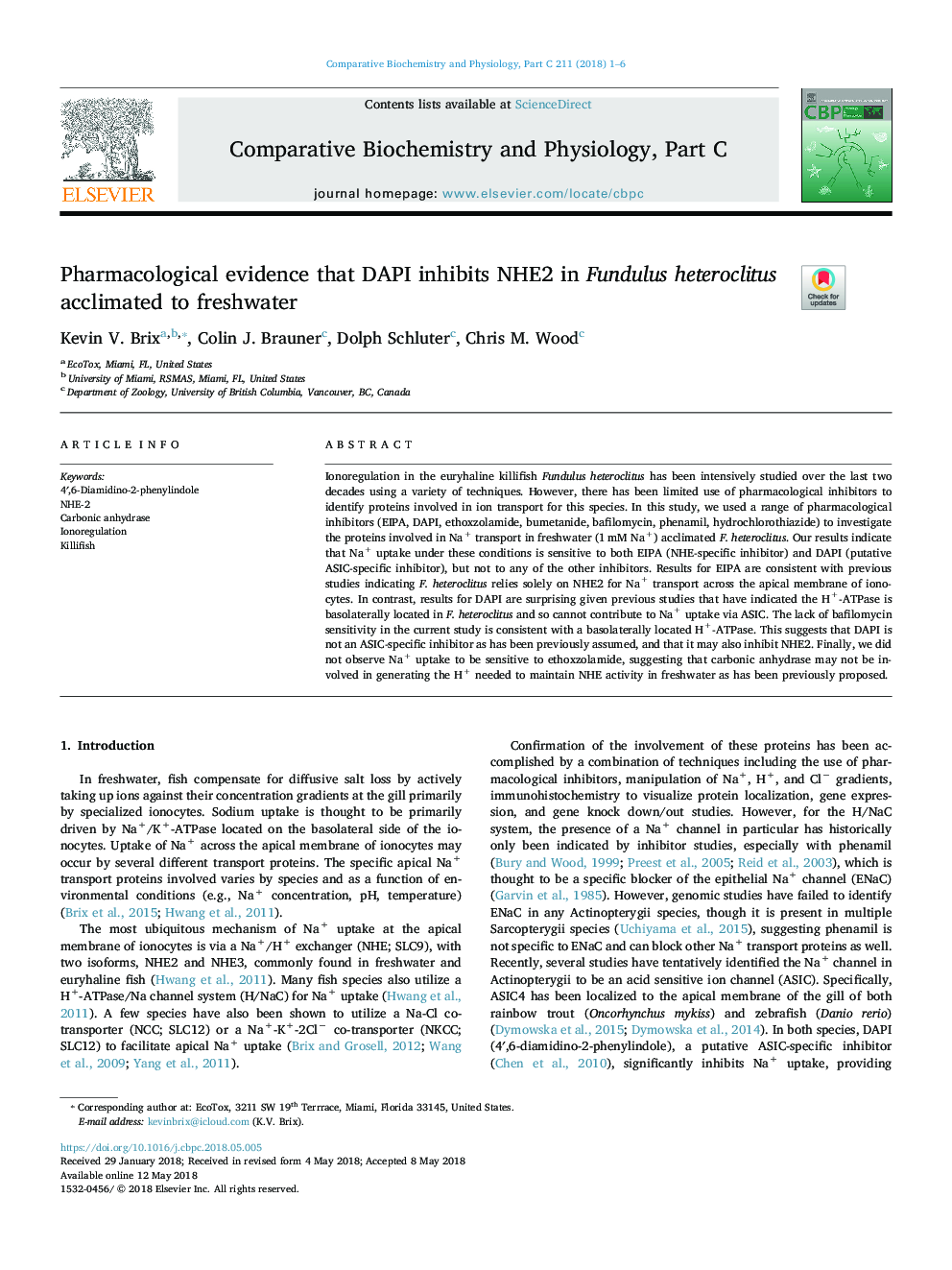| Article ID | Journal | Published Year | Pages | File Type |
|---|---|---|---|---|
| 8318963 | Comparative Biochemistry and Physiology Part C: Toxicology & Pharmacology | 2018 | 6 Pages |
Abstract
Ionoregulation in the euryhaline killifish Fundulus heteroclitus has been intensively studied over the last two decades using a variety of techniques. However, there has been limited use of pharmacological inhibitors to identify proteins involved in ion transport for this species. In this study, we used a range of pharmacological inhibitors (EIPA, DAPI, ethoxzolamide, bumetanide, bafilomycin, phenamil, hydrochlorothiazide) to investigate the proteins involved in Na+ transport in freshwater (1â¯mM Na+) acclimated F. heteroclitus. Our results indicate that Na+ uptake under these conditions is sensitive to both EIPA (NHE-specific inhibitor) and DAPI (putative ASIC-specific inhibitor), but not to any of the other inhibitors. Results for EIPA are consistent with previous studies indicating F. heteroclitus relies solely on NHE2 for Na+ transport across the apical membrane of ionocytes. In contrast, results for DAPI are surprising given previous studies that have indicated the H+-ATPase is basolaterally located in F. heteroclitus and so cannot contribute to Na+ uptake via ASIC. The lack of bafilomycin sensitivity in the current study is consistent with a basolaterally located H+-ATPase. This suggests that DAPI is not an ASIC-specific inhibitor as has been previously assumed, and that it may also inhibit NHE2. Finally, we did not observe Na+ uptake to be sensitive to ethoxzolamide, suggesting that carbonic anhydrase may not be involved in generating the H+ needed to maintain NHE activity in freshwater as has been previously proposed.
Related Topics
Life Sciences
Biochemistry, Genetics and Molecular Biology
Biochemistry
Authors
Kevin V. Brix, Colin J. Brauner, Dolph Schluter, Chris M. Wood,
